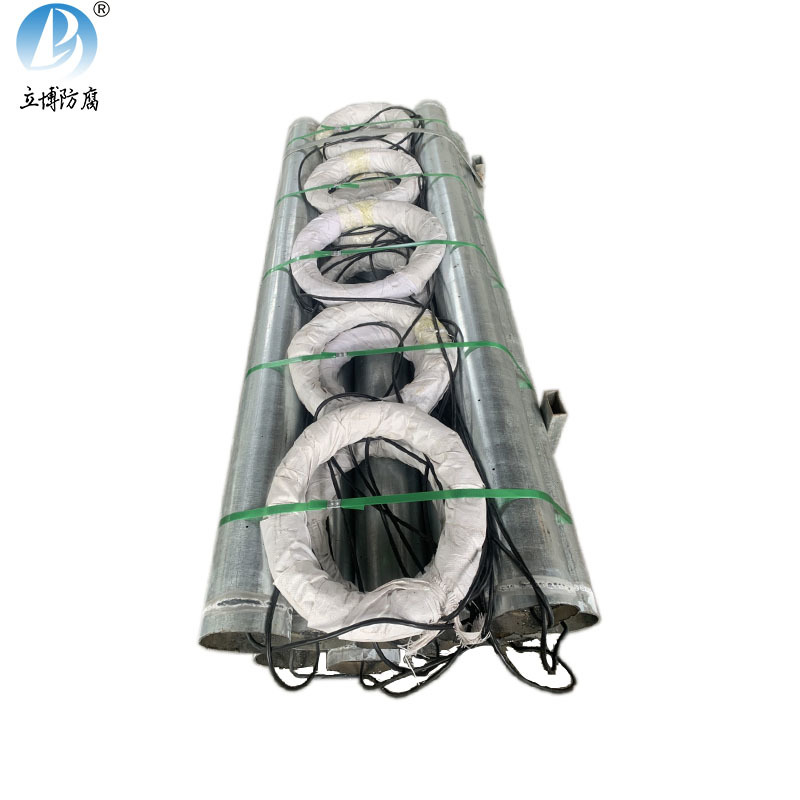How Aluminum Anodes Enhance the Longevity of Building Materials
Release time:
2025-06-08
In the construction industry, the durability and longevity of building materials are paramount. One effective solution to combat corrosion is the use of aluminum anodes. These sacrificial anodes play a significant role in protecting metal components, ensuring that structures maintain their integrity over time. This article delves into the mechanisms by which aluminum anodes enhance the longevity of building materials, exploring the benefits, applications, and success stories associated with their use.
In the construction industry, the durability and longevity of building materials are paramount. One effective solution to combat corrosion is the use of aluminum anodes. These sacrificial anodes play a significant role in protecting metal components, ensuring that structures maintain their integrity over time. This article delves into the mechanisms by which aluminum anodes enhance the longevity of building materials, exploring the benefits, applications, and success stories associated with their use.
Corrosion is a natural process that adversely affects metals, leading to deterioration and structural failure. It occurs when metals react with their environment, often resulting in the formation of rust and other corrosion byproducts. This degradation can significantly shorten the lifespan of building materials, from steel reinforcements to aluminum cladding, leading to costly repairs and safety concerns.
The corrosion process involves electrochemical reactions between the metal and its surrounding environment. Factors such as moisture, oxygen, and pollutants can accelerate this degradation. Understanding these factors is crucial for implementing effective corrosion prevention strategies.
When aluminum anodes are installed, they corrode preferentially, thereby preventing the underlying metal (such as steel) from oxidizing. The aluminum anode creates a galvanic cell, redirecting the electrochemical reactions away from the more valuable structural metal.
Aluminum is lightweight, cost-effective, and has excellent corrosion resistance, making it an ideal choice for sacrificial anodes. Its ability to withstand harsh environmental conditions ensures prolonged protection for the building materials it safeguards.
These anodes are shaped through an extrusion process, providing uniform density and surface area for effective corrosion protection. They are often used in marine applications and reinforced concrete structures.
Cast aluminum anodes are produced by pouring molten aluminum into molds. This method allows for the creation of complex shapes and sizes, making them suitable for various applications, including tanks and pipelines.
Anodes should be located in areas where corrosion is likely to occur, such as near waterlines, on steel reinforcements, and around structures exposed to moisture. Proper spacing and placement ensure that the protective current from the anodes reaches all critical areas.
Incorporating aluminum anodes into existing structures can be accomplished through various methods, such as bolting or welding. Maintenance teams should assess the condition of existing materials before implementation to ensure maximum impact.
Routine inspections and monitoring of aluminum anodes are essential to determine their effectiveness. This involves checking the level of corrosion on the anodes and ensuring that they are performing as designed.
Investing in aluminum anodes can lead to significant savings in maintenance and repair costs over time. By preventing corrosion, these anodes reduce the need for costly replacements and repairs.
Aluminum anodes are environmentally friendly, as they promote the longevity of materials, reducing waste. Their use contributes to sustainable construction practices and minimizes the environmental footprint of building projects.
In coastal regions, marine structures such as docks and piers have benefited significantly from aluminum anodes. By preventing corrosion from saltwater exposure, these structures have experienced extended operational lifespans.
Bridges utilizing aluminum anodes for their steel reinforcements have shown remarkable resistance to corrosion. These structures have maintained their integrity and safety over several decades, showcasing the long-term benefits of aluminum anode protection.
Aluminum anodes play a crucial role in enhancing the longevity of building materials by providing effective corrosion protection. Through the application of these sacrificial anodes, builders and maintenance teams can significantly reduce the risk of deterioration, ensuring the safety and durability of structures. As the construction industry continues to evolve, the integration of aluminum anodes represents a forward-thinking approach to sustainability and longevity. By adopting these practices, stakeholders can protect their investments while contributing to a more sustainable future in construction.
Key words:
Learn more about industry dynamics
The company's main products: magnesium alloy sacrificial anode series, aluminum alloy sacrificial anode series, zinc alloy sacrificial anode series, and cathodic protection supporting products, such as more than a dozen varieties and hundreds of specifications.
Focus on the development and production of cathodic protection materials
online message
We will contact you within one working day. Please pay attention to your phone or email.








